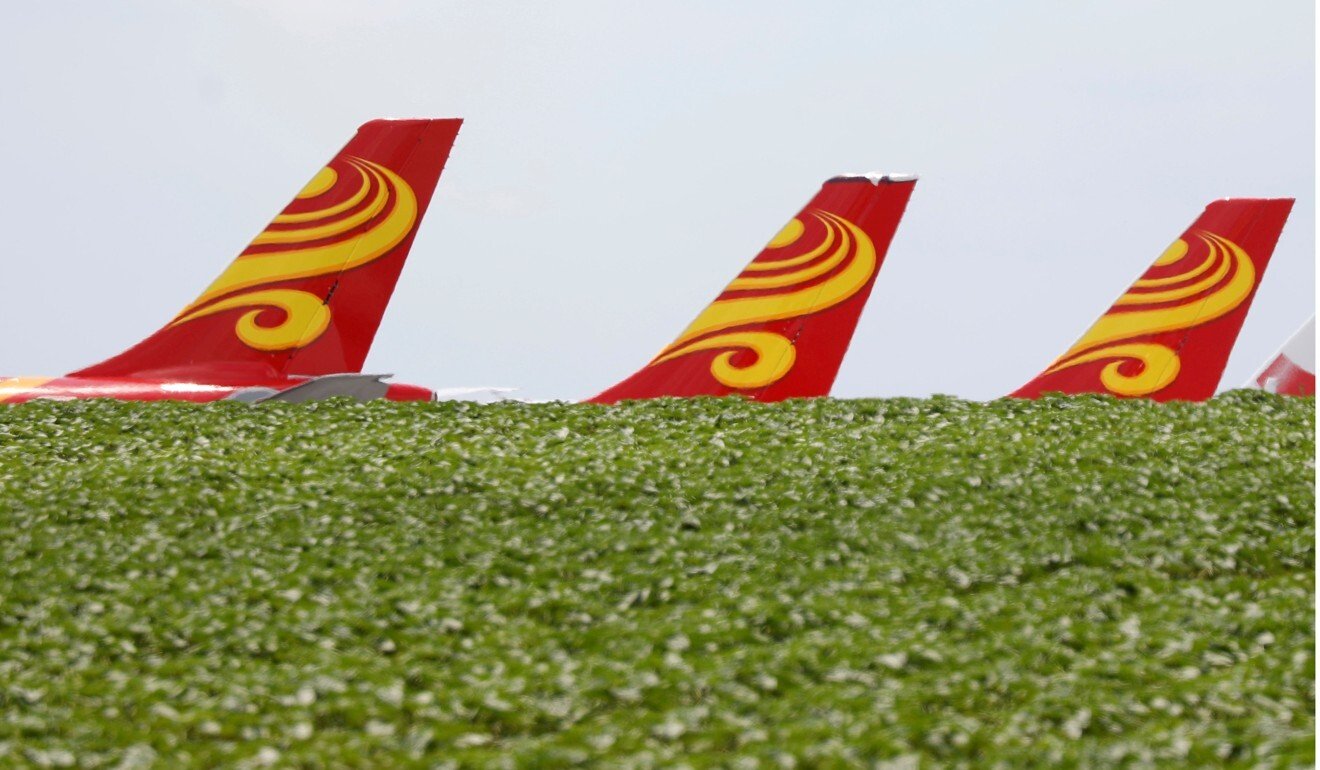Flight attendants who sign up will have pay cut from November until February and will be on duty for two months and off for two.
Hong Kong Airlines, the hometown rival of Cathay Pacific Airways, is seeking to cut the pay of its more than 1,200 cabin crew by 30 per cent to “secure and safeguard” jobs and its very survival during the Covid-19 pandemic.
The cash-strapped carrier, backed by Chinese conglomerate HNA Group, said on Friday that it wanted to lower salaries for four months, while the number of crew required to work would be slashed by half with “fewer than 10 aircraft” flying during the health crisis.
The city’s third largest airline has been beset by financial difficulties for more than two years with its woes made worse by the pandemic and the resulting strict travel restrictions. Pilots have taken unpaid leave while 400 jobs were axed earlier this year.
“Our current crew strength is far in excess of the number required to operate the planned flight schedule,” the airline’s director of service delivery, Chris Birt, said in a memo.
“As a result, our salary costs are disproportionately high, we are unable to provide you with sufficient flying hours.”

Across the world, airlines are axing staff to slash costs and preserve cash, including at British Airways, which warned 13,000 jobs were at risk while more than 8,000 took redundancy. US carriers are preparing to furlough or lay off tens of thousands of workers.
Locally, Cathay Pacific is poised to announce significant job cuts as early as next month.
Flight attendants at Hong Kong Airlines who signed up would have their pay cut from November until February and would be on duty for two months and off for two.
Basic salary and fixed allowances would be reduced by 30 per cent, while variable allowances would not be affected. Staff would be allowed to seek outside employment with prior approval.
Cabin crew have until October 4 to sign up, according to the internal memo, but an airline spokeswoman did not say whether there would be consequences if workers opted not to join the scheme.
“This is the biggest crisis that the aviation industry has ever faced and we must do all we can to reduce costs and survive,” Birt said. “In the meantime, we will continue to monitor the situation closely and reserve the right to make adjustments to this scheme subject to providing reasonable notice.”
Carol Ng Man-yee, chairwoman of the Hong Kong Confederation of Trade Unions and general secretary of the Cabin Attendants Union of Hong Kong, doubted the scheme would benefit staff.
“It is hard to say whether the scheme is better than job cuts. For instance, it is unclear … whether [Hong Kong Airlines] is simply trying to apply for more subsidies from the government’s [second] round of the employment support scheme by not cutting jobs.”
The airline had only avoided being closed by the government after receiving a last-minute bailout earlier this year, she said. “Their financial situation has been poor for a long time.”
Meanwhile, 99.5 per cent of the carrier’s pilots signed up for a further round of no-pay leave, resulting in the salaries and allowances of captains and first officers being slashed by 60 per cent for six months starting from October 1.
Hong Kong Airlines was one of the first carriers to cut jobs in February, at the start of the pandemic, before the devastating scale of the health crisis hit the industry. Some 400 jobs out of a 3,500 workforce were axed.
The airline has also sought a second round of support under the government’s coronavirus relief scheme to cover a portion of its wages from September until the end of November. Pilots originally took a two-fifths haircut on fixed salary and allowances from March through to September.
The airline received HK$77.1 million (US$9.95 million) to help with the wages of 2,940 employees in the first phase of the scheme from June to August.
At the airline’s peak, it employed more than 3,900 people and operated 38 aircraft.















